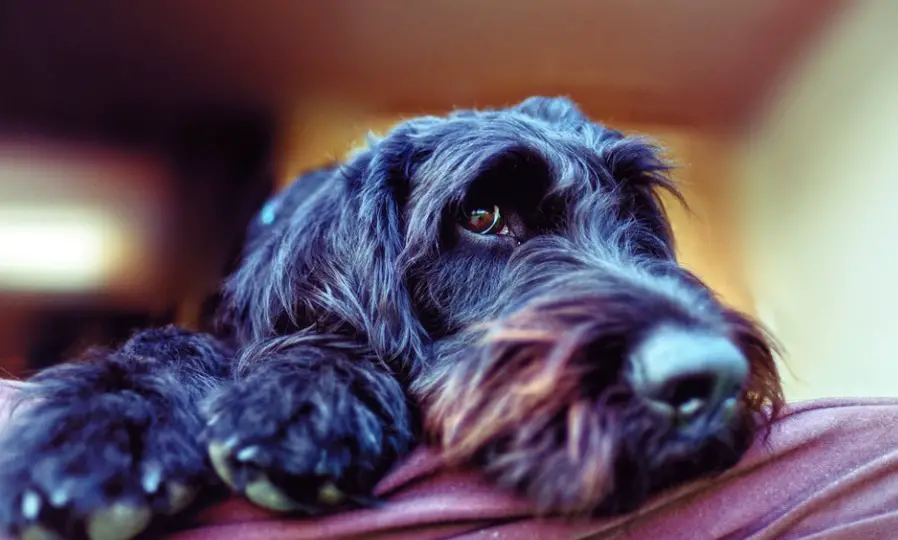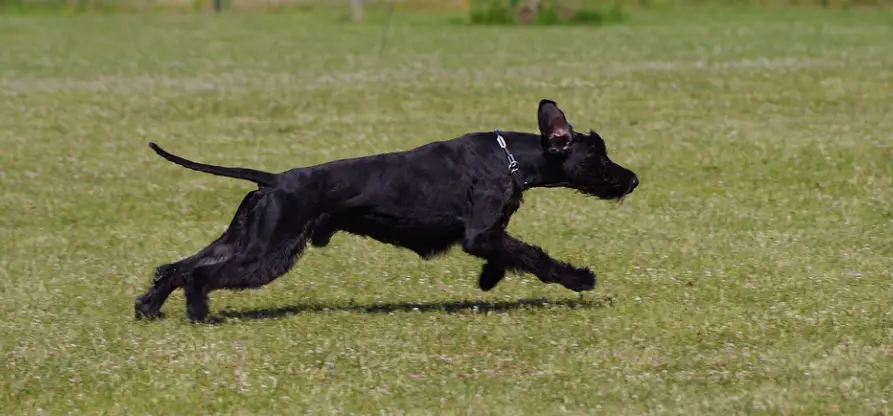Table of Contents
Giant Schnauzer: All You Need To Know
A giant schnauzer is the domestic dog breed that belongs to the kingdom of Animalia, phylum Chordata, and class Mammalia. Its genus is Canis, and its species is Canis lupus. Its length is up to 58.4 to 68.6 cm, and it weighs about 29.5 to 40.8 kg. It lives in a domesticated habitat, with a lifespan of up to 10 to 12 years.

What is Giant Schnauzer?
The Giant Schnauzer is the biggest of the three schnauzer breeds, having originated in Germany. This is the newest of the schnauzer breeds, having been created by Bavarian cattlemen who desired a dog that could herd cattle as well as the Standard Schnauzer but was bigger in size. The Giant Schnauzer was created by crossing a Standard Schnauzer with a variety of bigger canines, including the Great Dane, according to legend.

The Giant Schnauzer is a square-shaped dog that is strong and sturdy. Its skull is robust and rectangular, and its eyes are black and oval-shaped. The wiry double coat on these canines is either completely black, salt-and-pepper, or black-and-tan in hue.
Bushy brows, whiskers, and a beard made up of thicker, coarser hair characterise giant schnauzers. To keep their coats clean, these dogs must be groomed on a regular basis. They’ll need to go to the groomer on a frequent basis to maintain their head and body hair in control if they want to keep their signature look.
This breed is an intelligent, easy-to-train working dog. Giant schnauzers need a lot of activity. These canines are dominating and demand a solid owner that is able to be consistent and understands how dogs act. These dogs are excellent guards and watchdogs, and their bark is loud and threatening.
Aside from being a livestock dog, giant schnauzers have found work in a variety of fields. Because of their intelligence and disposition, they make excellent working dogs and have been employed by the military, police, and search and rescue teams. These dogs do not get along with other dogs or small pets in the house due to their dominating, working temperament and high prey drive.
The Giant Schnauzer is a big working dog breed that originated in Germany. This dog has a lot of positive characteristics, but it’s also highly demanding and needs someone who understands how to handle them. Let’s get a closer look at this endearing colossus!

Fun Facts About Giant Schnauzer!
The Standard Schnauzer, Miniature Schnauzer, and Giant Schnauzer are the three Schnauzer breeds. The original breed is the Standard Schnauzer, while the other two types were created by crossing the Standard Schnauzer with other dogs.
One of Three Schnauzer Breeds
The Standard Schnauzer, Miniature Schnauzer, and Giant Schnauzer are the three Schnauzer breeds. The original breed is the Standard Schnauzer, while the other two types were created by crossing the Standard Schnauzer with other dogs.
Although the precise date of the Giant Schnauzer’s birth is unknown, the Standard Schnauzer can be seen in artwork dating back to 1492, and we know that the Giant Schnauzer was created after that. Crossbreeding the Standard Schnauzer with larger dogs like the Great Dane and the Bouvier des Flandres resulted in the Giant Schnauzer.
The Giant Schnauzer was developed as a herding and livestock guarding dog. It was used to draw cards and move livestock to market. The Giant Schnauzer’s function had altered by the turn of the century, and it was now being employed to protect breweries, stockyards, and butcher shops.
Giant Schnauzer: a High Prey Drive
While dogs have evolved away from their closest relatives, the wolves, the urge and aptitude to hunt have remained in most breeds. Due to the fact that various breeds have been developed for distinct qualities, the desire to hunt varies by breed.
Prey drive entails five distinct actions: seeking, stalking, pursuing, biting to grab, and biting to kill. Because these behaviours differ between breeds, it’s critical to understand how they interact with other animals. Giant Schnauzers were designed to herd cattle and defend livestock, so they’re more likely to chase and catch other animals. They must be kept on a leash or in a secure yard.
Giant Schnauzer: Prone to Bloat
The deep-chested Giant Schnauzer is prone to bloating, which is caused by the stomach swelling with air. Stomach torsion or gastric dilatation-volvulus is a more dangerous disease that can occur as a result of this. If not treated promptly, this disease can be life-threatening.
When the stomach fills with air, pressure builds, preventing blood from returning to the heart from the hind legs and abdomen. Blood builds up in the dog’s back, reducing functioning blood volume and putting the dog into shock. This situation can worsen if the stomach turns in on itself, cutting off blood flow even further.
The dog needs emergency veterinarian care, which may include surgery to fix the issue. Restlessness, pacing, drooling, pale gums and lip licking, indications of discomfort, and an inability to vomit are all symptoms of this disease. When a dog is identified with this problem, surgery can be performed to keep the stomach from twisting again. Stomach tacking is the term for this operation.
Giant Schnauzer Citations
- Prevalence of diagnostic characteristics indicating canine autoimmune lymphocytic thyroiditis in giant schnauzer and hovawart dogs. J Small Anim Pract . 2009 Apr;50(4):176-9.
- Hypercalcaemia associated with chronic lymphocytic leukaemia in a Giant Schnauzer. Aust Vet J . 2001 May;79(5):335-8.
- Dermal arteritis of the nasal philtrum in a Giant Schnauzer and three Saint Bernard dogs. Vet Dermatol . 2002 Oct;13(5):275-81.







